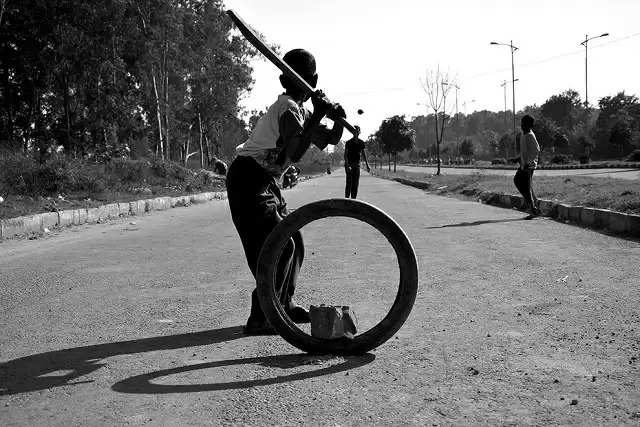Reliving the glory days of gully cricket


Let’s just admit it, we all have had our own rules while playing Gully cricket with our friends. Though we may not have gotten the opportunity to play in well-equipped stadiums, a backyard, garden, park or any free space would work as stadiums for us in our childhood days.
Here are some typical and common gully cricket rules that every cricket enthusiast must have followed while playing especially in the Asian subcontinent.
Owner is God
Well, in gully cricket, Sachin Tendulkar is not the God; it’s actually the owner of the bat and ball. We all can relate to it. The owner’s decision is the final and the most superior decision, no power can overturn it. Also, the match can be abandoned at any time as per the wish of the owner, or his mom.

Stumps? Not really
Let’s be honest, who uses proper stumps in gully cricket? The stump can be anything; one short stick between two long ones, a chair, a tyre or even drawings from the wall. Sometimes when nothing works as stumps, the batsman can be given out if he gets beaten by the bowler consecutively three times.
One Drop One Hand Catch
Who cares about the standard rules? The ball drops once and if you catch it with one hand, the batsman is out. This rule certainly helps to develop the art of hitting grounded shots, doesn’t it?
Danger Zone
Every Gully cricket stadium has a danger zone, a zone where the ball shouldn’t reach at any cost; could be a neighbor’s house, or a shop or any place from where finding the ball is difficult.
Just 4-5 players to play?
If only 4-5 players attend the cricket match, dividing the teams becomes difficult. But no worries, there exists a new type of cricket, called individual cricket. Now, the rule of individual cricket is that the order of players will be decided earlier. The last batter will get the chance to bowl first and each individual has to set a target for the other batters.
Baby Over
Now, this rule used to confuse me a few years ago. Every time I saw a bowler bowling three wides in a row, I kept on wondering why his over wasn’t called a baby over. If a bowler conceded too many runs or bowled more than three extras in an over, his over would be declared as a ‘baby over’ and the next bowler would have to continue.
If you chuck, you bowl slow
In Gully cricket, there will only be a few bowlers who can bowl properly; the rest chuck. Now, the ones who bowl properly can add pace to their bowling, but if you’re chucking, you’ll not be allowed to bowl fast. Relatable?
Trial Ball
The first ball of every innings is a trial ball, meaning that neither the run scored nor the wicket taken off that delivery will be considered legitimate. After all, it’s bowled just to assess the pitch and weather condition!
Umpire
Generally, the umpire in a gully cricket match belongs to the batting team. It’s really tough to be an umpire and make decisions in favor of your side. Moreover, the decisions of the umpire aren’t the most superior ones. The players can forcefully oblige the umpire to overturn his decision by making promises, and the umpire cannot do anything except overturning the decision.
These were some of the common and typical rules which guide Gully cricket. How many rules among the above-mentioned ones did you follow in your cricket career in the streets and gullies?

